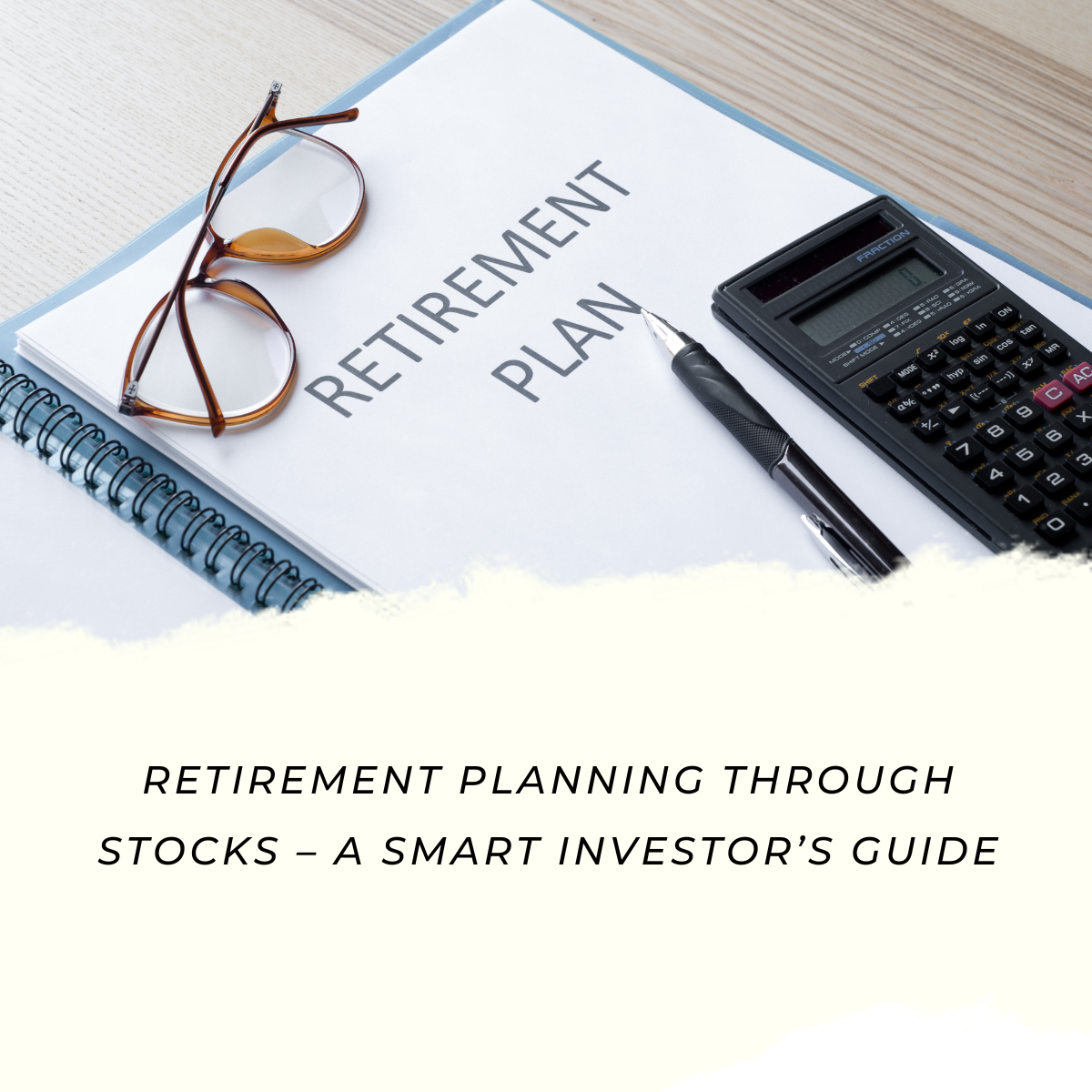India’s journey toward becoming a global semiconductor hub is gaining momentum. With government support, rising digitalization, and massive private investments, semiconductor manufacturing is emerging as the next big wealth-creation story — and smart investors are taking note. Semiconductors are the brains of all modern electronic devices — from smartphones and cars to data centers and defense equipment. As technology adoption surges across industries, the demand for chips is exploding worldwide.India, traditionally a chip consumer, is now positioning itself as a producer through strategic policies and partnerships. The Indian government’s ₹76,000 crore semiconductor mission aims to attract global manufacturers, build fabs, and create a full-stack semiconductor ecosystem.Recent developments include: Micron’s $2.7 billion plant in Gujarat, the first of its kind in India. Vedanta-Foxconn and Tata Electronics entering the chip manufacturing race. Incentives for design, assembly, and testing units (ATMP facilities). This push will not only reduce import dependence but also create new opportunities across the value chain. Several listed Indian companies are well-positioned to benefit from this semiconductor boom — either through direct involvement or ancillary support.Top players to watch include: Tata Elxsi – Involved in chip design and embedded systems. Dixon Technologies – Expanding into component manufacturing. ASM Technologies – A pure-play semiconductor design and engineering company. SPEL Semiconductor – India’s only publicly listed semiconductor assembly and testing firm. MosChip Technologies – Specializes in design and semiconductor IPs. HCL Technologies & Wipro – Offer semiconductor design and R&D services for global clients. As domestic chip fabrication begins, these companies could see strong revenue growth and margin expansion. The U.S.-China tech war has prompted global players to diversify chip supply chains — and India is emerging as a stable, cost-efficient alternative.With a large engineering talent pool, growing infrastructure, and strong policy backing, India has a unique window of opportunity to establish itself as a semiconductor hub. While the sector is still in its early stages, semiconductor-related stocks could offer multi-year growth potential. Investors should focus on: Companies with strong R&D capabilities. Firms benefiting from government-linked contracts. Ancillary businesses in testing, packaging, and design. As with any emerging sector, volatility is expected — but the long-term prospects look promising. The semiconductor revolution could be India’s next IT moment.With policy momentum, global partnerships, and rising domestic demand, semiconductor stocks present a compelling opportunity for investors aiming to ride India’s next wave of technological growth. In short: Chips could be the new gold — and India’s semiconductor story is just beginning.
Uncategorized
SIP vs Lump Sum — Which Investment Is Better in 2025?
“Should you invest regularly through SIP or go big with a one-time lump sum? Let’s find out what works best in 2025.” With the growing popularity of mutual funds and other investment options in India, one of the most common questions investors ask is:Should I invest through a SIP (Systematic Investment Plan) or make a Lump Sum investment? In 2025, with markets showing frequent ups and downs, this decision becomes even more crucial. This article explains the key differences, benefits, and risks of both SIP and Lump Sum investments — and helps you decide which approach is smarter in 2025. What is SIP? A Systematic Investment Plan (SIP) is a disciplined method of investing where you contribute a fixed amount regularly — monthly, quarterly, or annually — into a mutual fund. For example, investing ₹1,000 every month in an equity mutual fund. Key Benefits of SIP: Limitations of SIP: What is Lump Sum Investment? A Lump Sum Investment means investing a large amount at once — for example, ₹5 lakh in one go, usually after receiving a bonus or inheritance. Key Benefits of Lump Sum: Limitations of Lump Sum: SIP vs Lump Sum — Which is Better in 2025? Let’s look at the 2025 investment scenario to understand which is better: Suppose you earn ₹15,000 per month. This strategy ensures you stay invested continuously while capitalizing on market opportunities. Expert Recommendation for 2025 Considering the volatility and inflation trends expected in 2025: There’s no single “perfect” investment method. Both SIP and Lump Sum have their advantages.However, in 2025’s uncertain market environment, SIP offers stability, discipline, and peace of mind, making it the preferred choice for most investors. If you receive a windfall or find a good market opportunity, you can still use Lump Sum investments to enhance your returns. Need Help Choosing the Right Mutual Fund? For expert consultation and assistance in selecting the best mutual funds tailored to your goals,contact Beesawa — your trusted partner for smart, goal-based investments.
Retirement Planning Through Stocks – A Smart Investor’s Guide
It’s not about working for money — it’s about making your money work for you in retirement. Gone are the days when retirement planning in India meant only fixed deposits, PPF, or pension schemes. With inflation rising and life expectancy increasing, traditional savings can no longer guarantee a secure future. That’s where stocks and equity investments come in — they help you beat inflation, generate higher returns, and build long-term wealth. With a smart plan, the stock market can be your strongest ally for financial independence after retirement. Why Stocks Belong in Your Retirement Plan Beat Inflation: Fixed-income instruments earn 6–7%, while inflation runs close to 5–6%. Quality stocks have historically delivered 10–14% annual returns, helping your savings stay ahead. Power of Compounding: The earlier you start investing, the more your money multiplies. A monthly SIP of ₹10,000 for 25 years at 12% CAGR can grow to ₹1.3 crore. Delaying your start by 10 years reduces this to less than ₹25 lakh. Participate in India’s Growth: Equity investing allows you to own a share of India’s growth story across sectors like IT, banking, manufacturing, and infrastructure. Building a Stock-Based Retirement Portfolio Start Early and Stay Consistent: Time is your biggest advantage. Begin small, stay disciplined with SIPs, and increase your investment as your income grows. Diversify Smartly: Balance your investments across categories for growth and stability: Use Equity Mutual Funds or Index Funds: If direct stock picking seems difficult, go for Index Funds, ETFs, or Equity Mutual Funds. These offer diversification, professional management, and simplicity for long-term investors. Adjust Portfolio with Age Your investment mix should change as you approach retirement: Shift gradually from growth-oriented assets to income-generating options as you age. Dividend Stocks for Post-Retirement Income After retirement, focus on dividend-paying stocks that provide regular income without selling shares. Companies like ITC, Hindustan Zinc, Coal India, and NTPC have a strong dividend record. During your earning years, reinvest dividends for compounding; later, use them as passive income. Add Global and Alternative Assets For better diversification, allocate 10–15% of your portfolio to global or alternative investments such as: Smart Investor Tips Automate your SIPs to stay consistent. Avoid panic-selling during market downturns. Review your portfolio annually and rebalance as needed. Focus on long-term goals rather than short-term volatility Sample Retirement Portfolio Asset Type Allocation Example Stocks/Funds Large Cap Stocks 40% Reliance, HDFC Bank, Infosys Mid/Small Cap 25% Polycab, KPIT, Tube Investments Equity Mutual Funds 20% Nifty 50 Index Fund Debt Instruments 10% Government Bonds Gold/REITs 5% Gold ETF, Embassy REIT Retirement planning through stocks is not about taking excessive risks — it’s about strategic, disciplined investing that ensures steady, inflation-beating growth. Start early, stay consistent, diversify wisely, and let compounding work for you. The best time to plan your retirement was yesterday, and the second-best time is today.
ETF vs Mutual Fund: Which Is Better for Indian Investors in 2025?
When it comes to investing, Indian investors often face one big question — Should I choose ETFs or mutual funds?Both are great tools for building wealth, but they work differently. In 2025, as more people look for low-cost, flexible, and transparent investment options, ETFs (Exchange Traded Funds) are gaining serious attention.Let’s break it down in an easy-to-understand way What Are ETFs? An Exchange Traded Fund (ETF) is like a basket of securities — it can include stocks, bonds, or even commodities like gold.The best part? You can buy and sell ETFs on the stock exchange, just like a regular share. Most ETFs track an index such as Nifty 50, Sensex, or Gold, allowing you to invest in multiple companies with just one click. Example:If you buy a Nifty 50 ETF, you automatically invest in 50 top Indian companies at once. What Are Mutual Funds? A mutual fund also pools investors’ money to buy a mix of securities.However, the main difference is — mutual funds are actively managed by fund managers who decide what to buy or sell to outperform the market.They don’t trade like shares — instead, you buy or redeem them at the day’s closing NAV (Net Asset Value). Why ETFs Are Growing in 2025 Between 2025–2026, a major shift is happening in investment behavior. Investors — especially millennials and professionals — are moving toward low-cost, transparent, and diversified instruments. That’s where ETFs tick all the boxes ✅ Key Benefits of ETFs: ETFs for Every Investment Goal Goal ETF Example Long-term wealth creation Nifty 50 / Sensex ETF Sector exposure PSU Bank, IT, or Pharma ETFs Gold hedge Gold ETF International diversification Nasdaq 100 / S&P 500 ETF Mutual Fund vs ETF: A Quick Comparison Feature Mutual Fund ETF Management Actively managed by fund managers Mostly passive (tracks an index) Trading Bought/sold at end-of-day NAV Traded live on stock exchanges Expense Ratio Higher (due to management costs) Lower (cost-efficient) Transparency Portfolio disclosed monthly Portfolio visible daily Minimum Investment ₹500–₹1000 (SIP) Price of one unit (depends on market) Liquidity Limited (depends on fund house) High (instant buy/sell like stocks) Who Should Invest in ETFs? ETFs are ideal for: Pro Tip:Combine index ETFs (for stability) with sector or thematic ETFs (for growth) — this mix can help balance your portfolio smartly. Who Should Stick to Mutual Funds? Mutual funds are better suited if: Mutual funds can outperform in certain market conditions because of active decision-making, though they come with slightly higher costs. In 2025, ETFs are not just a global trend — they’re becoming the foundation of modern, efficient portfolios in India.They combine the diversification of mutual funds with the flexibility and transparency of stocks — all at a lower cost. For many Indian investors, the smartest approach is not choosing one over the other, but using both together —ETFs for long-term, low-cost diversification, and mutual funds for goal-based, professionally managed investments.
Meesho IPO – Check Issue Date, Price, Lot Size & Key Details
Meesho IPO – Check Issue Date, Price, Lot Size & Key Details India’s social commerce giant, Meesho, is getting ready for a landmark IPO via SEBI’s confidential filing route. The SoftBank-backed company is on track to become the first horizontal e-commerce marketplace from India’s startup ecosystem to hit the public markets—even ahead of Flipkart. Let’s dive into the IPO details, business updates, and why Meesho could be a strong contender in your investment portfolio. Meesho IPO Highlights: Feature Details IPO Issue Size Up to ₹8,500 Cr (~$1 Billion) Primary Capital ₹4,250 Cr IPO Type Confidential filing via SEBI Expected Listing Sep–Oct 2025 Use of Funds Growth, Tech Upgrades, Early Investor Exit Valuation Target ~$10 Billion Lead Investors SoftBank, Meta, Prosus Why Is Meesho’s IPO a Big Deal? While many e-commerce players are chasing quick commerce and premium customers, Meesho has quietly built a value-focused business targeting Tier 2, 3, and 4 cities. Its platform thrives on unbranded, affordable products that appeal to price-conscious Indian shoppers. The Meesho Marketplace Model Meesho has evolved from a reseller model to a robust open marketplace with low commissions, no listing fees, and a stronghold in low-AOV (average order value) commerce. Its current AOV of ₹315–₹350 helps it dominate the “INR 99 economy”—something Amazon and Flipkart struggle with due to their high logistics overheads. Meesho Mall: The Branded Bet To strengthen repeat purchases and profitability, Meesho launched Meesho Mall, onboarding over 1,000 D2C brands. This vertical offers: This hybrid model could offer long-term profit stability without diluting Meesho’s core value proposition. Financial Snapshot of Meesho (FY24 vs FY23) Metric FY24 FY23 Revenue ₹7,615 Cr ₹5,721 Cr Adjusted Loss ₹53 Cr ₹1,569 Cr Total Loss ₹305 Cr N/A GMV $6.5 Billion $4.5 Billion (approx.) Market Share (Volume) 37% ~30% Meesho Investment Potential With a strong balance sheet, massive user base, and improving bottom line, Meesho’s IPO presents an exciting opportunity for retail and institutional investors. It’s also a rare case of an Indian startup reaching profitability before listing, making it even more attractive amidst global skepticism toward loss-making tech IPOs. Thinking About Investing? If you’re considering investing in the Meesho IPO or want to know more about upcoming public offerings, connect with Beesawa for personalized investment consultations and IPO guidance. Disclaimer This blog is for informational purposes only and does not constitute investment advice. Please consult a SEBI-registered advisor before making any investment decisions.
Financial Sector on Fire: How Banks & NBFCs Are Powering the Indian Stock Market 2025 Rally
Financial Sector on Fire: How Banks & NBFCs Are Powering the Indian Stock Market 2025 Rally The Indian stock market in 2025 has a clear frontrunner – the financial sector. From private banks to NBFC giants, financial institutions are driving the momentum that’s pushing indices to record levels. Recent weeks have witnessed the Nifty Bank and Financial Services indices touching all-time highs, with banking and non-banking finance companies riding a wave of investor optimism. A rate cut by the RBI in June proved to be a key trigger. With the repo rate slashed by 50 basis points (down to 5.5%) and the cash reserve ratio reduced by 100 basis points, markets were flooded with liquidity. As per RBI estimates, the CRR cut alone could inject ₹2.5 trillion into the economy by the end of 2025. This policy easing has made borrowing cheaper and lending more attractive – a perfect cocktail for financial stock growth. Liquidity-Driven Lending More money in the system means more lending opportunities. Banks can now lend at attractive margins while customers enjoy reduced borrowing costs. With deposit rates remaining relatively low, a growing chunk of money is making its way into equity and debt markets, favoring financial stocks. Analysts forecast loan growth could rebound to 12% in FY26 as retail and business credit picks up again. Healthier Balance Sheets = Higher Confidence Another pillar of strength is the improved asset quality of Indian banks. Non-performing assets (NPAs) are now at multi-decade lows, hovering around 2.3%. Years of clean-up, better underwriting, and regulatory oversight have helped. This healthier credit environment means banks, especially private ones and NBFCs, can confidently expand their loan books. Additionally, the RBI’s move to ease personal loan rules and boost MSME access to credit is fueling retail lending. Some lenders have reported a spike in home, auto, and personal loans, thanks to the lower interest regime. Even if credit growth was below 10% in mid-2025, the outlook remains upbeat. NBFCs Take Center Stage The spotlight isn’t only on big banks. NBFCs are thriving. Bajaj Finance, a key player in the segment, has already logged over 30% gains this year. Similarly, AU Small Finance Bank and other agile NBFCs are posting strong earnings and attracting serious investor attention. The rally also reflects broader trends: increased retail participation, growing capital flows, and a more robust IPO pipeline – all of which benefit financial intermediaries. Even public sectorbanks, often slow to join the party, are seeing gains as treasury yields dip and loan disbursals pick up. Why Financials Are Leading the Market The reasons are both fundamental and cyclical. With better balance sheets, ample liquidity, and rising credit demand, financial stocks are in a sweet spot. Moreover, in times of excess liquidity, money often flows into the financial sector first – a pattern seen repeatedly across market cycles. With the benchmark Nifty index up by around 5% YTD, financial stocks have far outperformed, becoming the backbone of the current market surge. Top private lenders like HDFC Bank and Kotak Mahindra Bank have also delivered double-digit returns, underlining investor confidence in this space. Final Thoughts The 2025 market rally isn’t a fluke – it’s being powered by the realignment of monetary policy, improved fundamentals, and the renewed appetite for credit. If trends continue, banks and NBFCs will remain in the driver’s seat for the foreseeable future. As liquidity keeps flowing and credit cycles strengthen, the financial sector looks well-positioned to sustain its leadership in India’s stock market story. Disclaimer: This blog is meant for informational purposes only and should not be considered investment advice. Always consult a financial advisor before making investment decisions.















 Total Users : 6296
Total Users : 6296